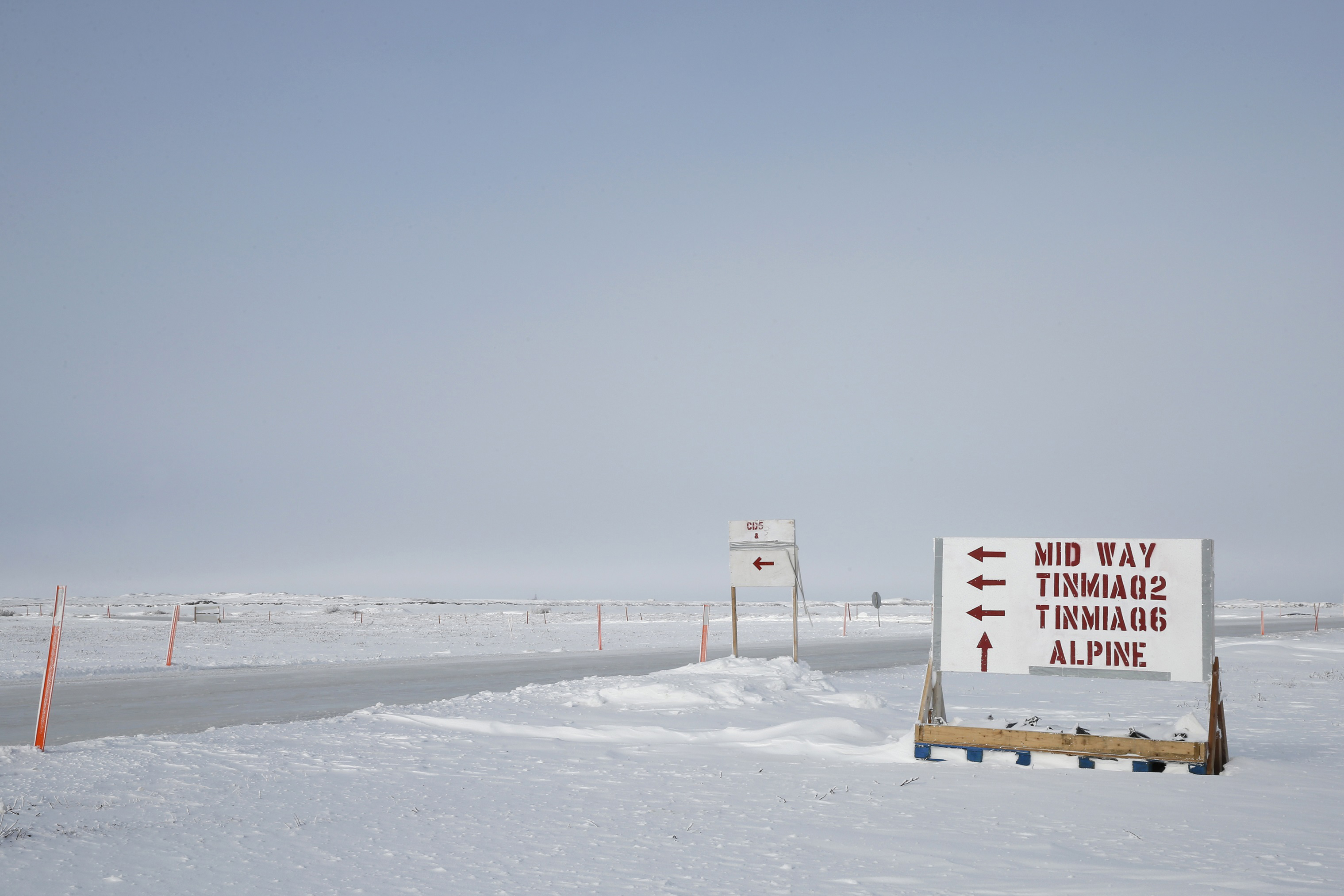US federal agency launches environmental review for a big new oil field planned for Alaska’s North Slope
The Willow oil field appears to hold at least 300 million recoverable barrels.

A government agency has launched the environmental review for what would be a major new oil development in Arctic Alaska, part of a larger program of expanded drilling on federal lands on the North Slope.
The U.S. Bureau of Land Management, in a Federal Register notice, announced that it is starting an environmental impact statement evaluating ConocoPhillips’ “master development” for its Willow oil field in the National Petroleum Reserve on the western side of the North Slope.
Willow is one of the promising discoveries made in recent years in the Cretaceous-era Nanushuk formation on the western side of the North Slope. ConocoPhillips announced the discovery last year and said it appeared to hold at least 300 million recoverable barrels. After last winter’s exploration drilling yielded success, the company said in April that the results show an extension of the oil-bearing play. More exploration drilling is planned in the coming winter.
ConocoPhillips has concluded that Willow is big enough to be a standalone oil field with its own processing center.
The company, in its Willow development plan, proposes to build proposing a central processing facility, an infrastructure pad, up to five drill pads with up to 50 wells on each, a network of access and infield roads, an airstrip, pipelines, a gravel mine and a temporary artificial island to support barge delivery of modules.
The earliest possible startup would be in 2023, Al Hirshberg, ConocoPhillips’ executive vice president of production, drilling and projects, said in quarterly earnings teleconference held on April 26.
ConocoPhillips, the oil company most active in the 23 million acre reserve, has two other oil fields that it intends to bring online before Willow: The Greater Mooses Tooth 1, or GMT-1, expected to start production late this year, and Greater Mooses Tooth 2, or GMT-2, where the company hopes to start production in 2021.
More discoveries will likely be announced by ConocoPhillips, said Joe Balash, assistant secretary of land and minerals management for the Department of the Interior.
“They haven’t even scratched the surface,” said Balash in a keynote address at the America First Energy Conference held in New Orleans by the pro-fossil fuel Heartland Institute.
Balash said the Trump administration plans to open up much more Arctic Alaska territory to drilling.
He pledged a rewrite of the Obama-era integrated activity plan for the National Petroleum Reserve. That plan, released in 2013, established protections for environmentally sensitive and ecologically important areas like the Teshekpuk Lake uplands. Balash said it “completely changed the management program” and cut off drilling access to about half the reserve.
“As private industry has made clear, there’s a definite demand from the market for this additional acreage. And (we’re) working now with the state of Alaska and the local government, the north slope borough, to redevelop an integrated activity plan in the region that will make millions of more acres available for leasing and opening up some of the most prospective areas closest to the Barrow Arch,” he said, referring to the geologic formation associated with most North Slope oil development.
On the other side of the North Slope, in the Arctic National Wildlife Refuge, the administration will hold a lease sale next year, Balash said.
“I think there are going to be some eye-popping numbers that show up at that lease sale,” he said.
The environmental review and lease sale preparation in the wildlife refuge, like that in the petroleum reserve, is being managed by the BLM.